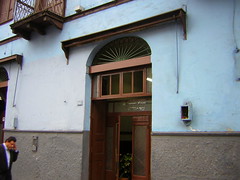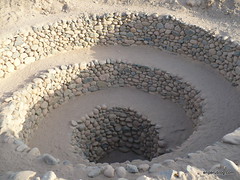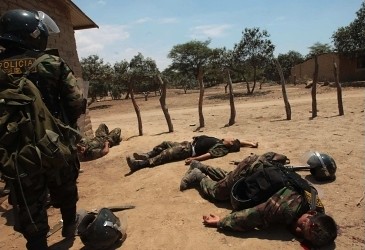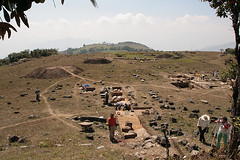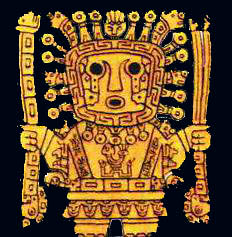Kunturwasi
High in the hills above the Rio Jequetepeque valley that leads from the northern Peruvian coast into the mountains of Cajamarca, is a temple named Kuntur Wasi, the House of the Condor. Looking out over a vast area from its mountain top perch, from this ancient temple you can survey an area as vast as a condor could.

Guarding the top of the stairs
5km out of the town of San Pablo are the ruins of Kunturwasi, a religious complex almost 3000 years old. It sits in the valley that was the main thoroughfare between the northern coast and mountains, making it an important site for it’s ancient constructors and visitors.
The hilltop temple is built upon a series of platforms, with huge steps leading up to the main plaza. At about 12m high, this plaza is instantly recognisable to anyone who has seen any Chavín-era ruins. The sunken plaza is almost identical to that of the hugely influential Chavín culture who formed what many believe to be the first real Andean empire. The sunken plaza displays the same channel work that was designed to fill the plaza with water for ceremonial purposes. These channels go off to connect to a complex water system that directs water in various directions along parts of the platform’s main face.
Also recognisable as Chavín-influenced are the beautiful carved monoliths (lithosculptures) representing deities. These are dotted around the complex and some are in very good condition.
The ruins were first investigated in 1945 by Julio C. Tello who confirmed a Chavin link. But it wasn’t until 1989 that more extensive work was carried out, thanks to a project led by Yoshio Onuki of the University of Tokyo. His team carried out mass-excavations discovering various layers in the platforms from different periods of inhabitance. Many objects of gold and rare shells were found, as were more rock carvings and ceremonial objects. Many were very similar to Chavin finds. Tombs were found in the platforms, and with them many funerary objects including gold crowns, necklaces, and trophies. Most of these items are now displayed in the local museum outside of town and below the ruins (opposite the comiseria).
Photos –
Tags: chavin, condor, kunturwasi, monolith, museum, rio jequetepeque, ruins, water channels, yoshio onuki




